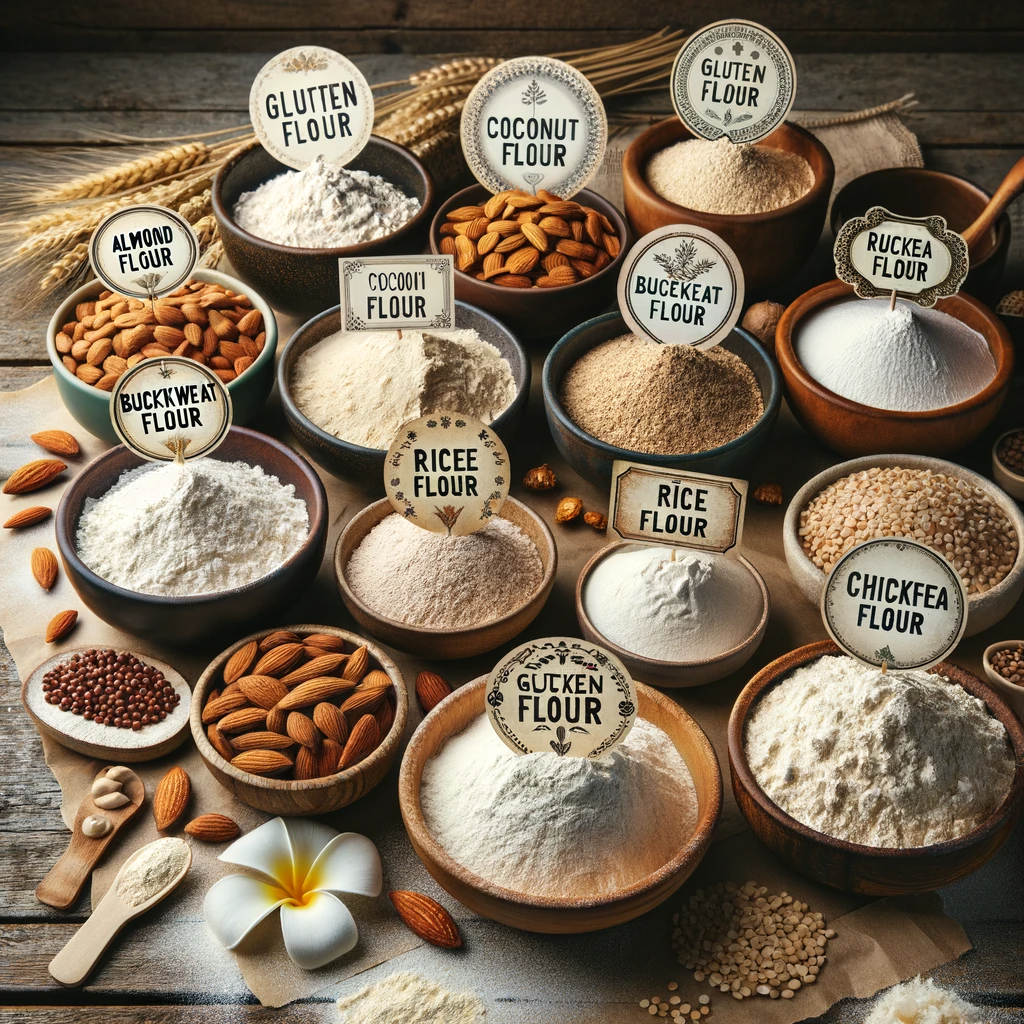Welcome to the world of gluten-free flours, where taste meets dietary restrictions. Whether you’re dealing with celiac disease, gluten sensitivity, or simply exploring new culinary horizons, gluten-free flours can open up a world of delicious possibilities. In this comprehensive guide, we’ll delve into the essential ingredients behind gluten-free flours, explore their nutritional value, and provide you with some mouthwatering recipes to showcase their versatility.
Understanding Gluten-Free Flours
Gluten-free flours are made from grains, nuts, seeds, or roots that do not contain gluten, a protein found in wheat, barley, and rye. The ingredients used in these flours vary, and each brings its unique flavor, texture, and nutritional profile to the table.
Key Ingredients in Gluten-Free Flours:
- Rice: Rice flour is a staple in gluten-free baking and is made from ground rice. It has a neutral flavor and is great for thickening sauces or making tender cakes and cookies.
- Almond: Almond flour is made from finely ground almonds, offering a subtly nutty taste and plenty of healthy fats and protein. It’s ideal for creating moist, dense baked goods.
- Coconut: Coconut flour is a high-fiber, low-carb option made from dried coconut meat. It adds a tropical touch to recipes and absorbs moisture well, making it perfect for gluten-free bread and muffins.
- Chickpea: Chickpea flour, also known as besan, is made from ground chickpeas and boasts a rich, earthy flavor. It’s commonly used in savory dishes like Indian pakoras and socca flatbreads.
- Tapioca: Tapioca flour, derived from the cassava root, is a fantastic thickening agent for soups, stews, and gluten-free baking. It creates a chewy texture in recipes like bread and pizza crust.
- Sorghum: Sorghum flour is made from ground sorghum grain and has a mild, slightly sweet taste. It’s excellent for making gluten-free pancakes, waffles, and biscuits.
Nutritional Benefits
Gluten-free flours offer a range of health benefits. They are often higher in fibre, vitamins, and minerals compared to traditional wheat flour. Many are also naturally gluten-free, which makes them suitable for those with celiac disease or gluten intolerance.
Using Gluten-Free Flours in Cooking and Baking: Now that you’re familiar with the ingredients of various gluten-free flours, let’s explore how to use them in your kitchen. Substituting gluten-free flours in your favorite recipes requires some adjustments, but with practice, you can achieve fantastic results.
Top Tips for Using Gluten-Free Flours:
- Experiment with blends: Mixing different gluten-free flours can yield the best results, balancing out flavor and texture.
- Add binders: Xanthan gum or psyllium husk can help mimic the elasticity that gluten provides in recipes.
- Adjust liquid content: Gluten-free flours often absorb more moisture, so be prepared to increase liquids in your recipes.
- Preheat the oven: Gluten-free baked goods may benefit from a slightly higher oven temperature to help with rising and browning.
Gluten-Free Recipes to Get You Started
Here are a couple of gluten-free recipes that showcase the versatility of these flours:
- Almond Flour Banana Bread: A moist and flavorful treat made with almond flour, ripe bananas, and a touch of honey.
- Chickpea Flour Pancakes: Savory and satisfying pancakes made with chickpea flour, herbs, and your choice of toppings.
Conclusion
Embracing gluten-free flour in your cooking and baking adventures is an exciting journey filled with delicious discoveries. With the right knowledge of ingredients, nutritional value, and techniques, you can create mouthwatering dishes that cater to a wide audience, regardless of dietary preferences or restrictions. So go ahead, explore the world of gluten-free flour, and let your creativity in the kitchen flourish!
